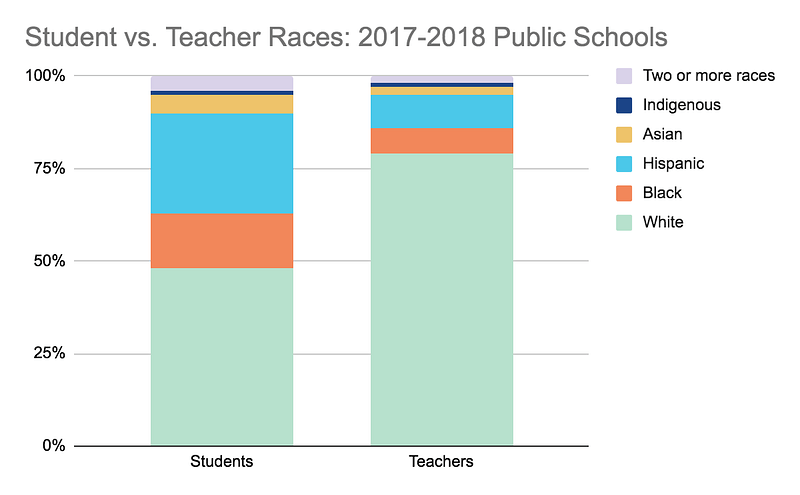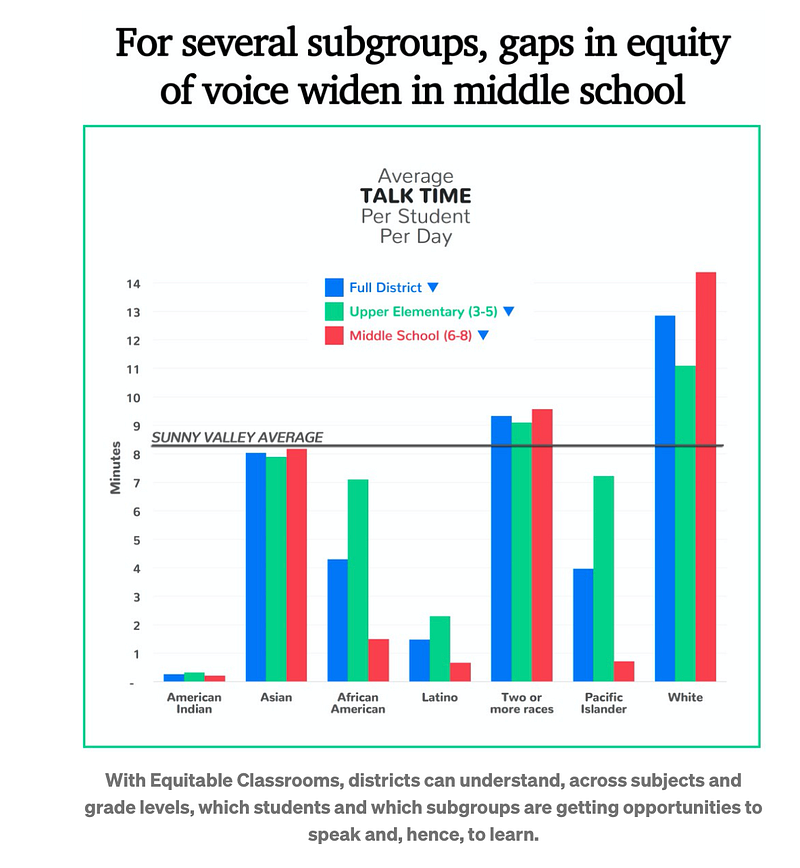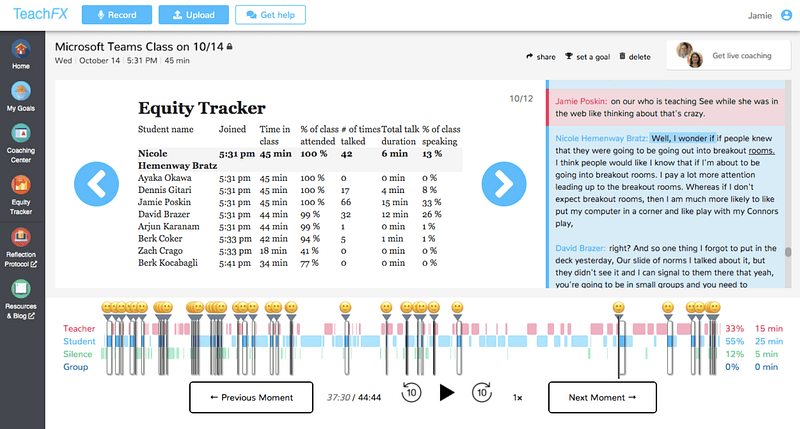How Voice AI Can Help Create More Equitable Classrooms
by Jennifer Carolan

In 2020, the year that challenged us with the largest racial justice protests in our country’s history, the top high school in New York City Public Schools, Stuyvesant, admitted just ten Black students out of a freshman class of 760. Black students comprise 25 percent of the district’s population.
This is not a New York City Public Schools problem, but the result of a national school system deeply rooted with decades of structural racism including within-school tracking (e.g. access to AP courses), uneven distribution of the most highly qualified teachers, and special education labeling that disproportionately disadvantages our most vulnerable students.
The research is clear on what prepares a child for academic success: effective teachers, evidence-based and rigorous curriculum, heterogeneous groupings of students, parental involvement and classrooms with equitable instructional practices. The results at Stuyvesant tell a story of unequal distribution of these practices and resources.
One of the most elemental units of instructional equity is the composition of classroom discourse — specifically, how much “air time” students receive in classroom dialogue. We know that learning happens most rapidly when a student is given the opportunity to process their thinking verbally — but just how often do teachers engage different subgroups of students (Black, Latino, English Learners) in comparison to others? And is there a difference in the types of questions and participation across subgroups?
We don’t know the answers because traditionally this information has been gathered manually — and very sporadically in research projects — and therefore is impractical to ascertain broadly. In resource-rich educational settings like the business schools of Stanford and Harvard, assistants manually track participation, often by gender. But now, technology exists so that every teacher can get insights about their own classrooms through their smartphones and laptops.
It’s why we invested in TeachFX in 2017. Founder Jamie Poskin, a former NYC teacher, was committed to building a product at the intersection of voice analytics and classroom equity. We’re excited to share that TeachFX just announced its classroom equity tool, designed to track equity of voice in the online environment via integrations with Zoom and Microsoft Teams.
It’s more relevant than ever because our nation’s demographics are changing. While our teaching force is predominantly white and female, our student demographics are shifting. In 2020, 27% of our K-12 students identify as Latino and 15% as Black.

With tools like TeachFX, teachers can begin the process of uncovering bias, a first step in helping to create a classroom environment where all students are getting the chance to engage and process their learning.
TeachFX’s first product revealed insights into teacher talk time vs student talk time. More than 150 districts are customers including Anaheim Union High School District, Detroit Public Schools, and the California Teachers Association. Teachers using TeachFX increase the amount of student voice in their classrooms from an average of 6% of class time to 24% of class time in the first semester of use, in addition to increasing the use of “think time” and open-ended questions by substantial margins.

The new product goes a step further and measures talk time by ethnicity and other subgroups, such as English Learners, and how it trends over time. The compounding impact of seemingly little practices like classroom questioning can lead to “Matthew Effects,”accumulated advantages that lead to sizable differences later on.

Conversely, students with poor engagement reinforced by teacher practice can experience feelings of lower self-worth and a loss of academic confidence during formative years.
We’re excited to see how teachers use this tool and hope it leads to instructional reflection and school-wide discussions on prioritizing equity at every level.







